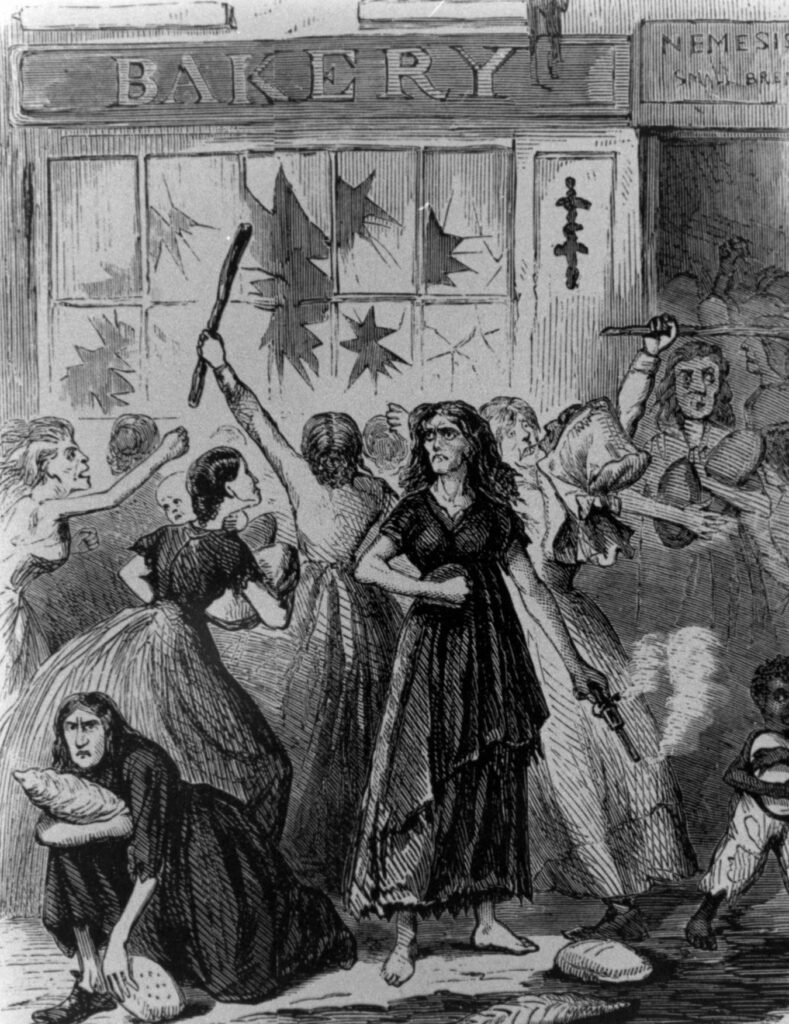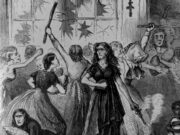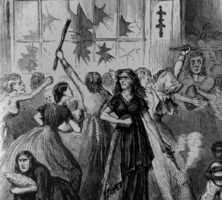Georgia’s civilian population felt the economic effects of the Civil War (1861-65) nearly as soon as soldiers left home to fight. As the war progressed, those on the home front faced growing shortages of food, salt, cloth, and cash. Governor Joseph E. Brown and the state’s legislators were acutely aware of increasing deprivation, and they responded with a series of measures designed to prevent starvation and suffering. The general attitude toward welfare in the nineteenth century was that it should be provided as needed but not excessively, for fear of encouraging idleness and dependence on the government. Georgia’s wartime welfare expenditures, however, were somewhat more liberal than this stance would dictate.
Before the war, Georgia’s government played no significant role in providing welfare, but the shortages associated with the conflict forced the state to undertake new welfare measures. Several factors combined to create the shortages in the state, but as the war dragged into its second year, the scarcity of supplies became more widespread as available materials were allocated to the military.
Wartime Needs
In 1863 the state experienced a serious drought and an early frost, and Governor Brown announced to the legislature that the “bread question” was crucial to Georgia’s success. Dissent among citizens on the home front, particularly women, resulted in bread riots around the state early in 1863. In September of that year Union and Confederate armies fought in the Battle of Chickamauga in northwest Georgia, and by early May 1864 the Atlanta campaign was under way. Both armies foraged the countryside, impressing food, fuel, and livestock, and Georgia faced an increasing refugee problem with people fleeing both to and from the Union army as the lines of battle advanced.

From Frank Leslie's Illustrated Newspaper
The state legislature responded to food shortages in 1863 and 1864 by approving three separate corn appropriation acts, totaling $1.89 million. The first provided corn to north Georgia, the area hardest hit by the drought and the war. Inferior-court justices in each county were responsible for its distribution. The families of Confederate soldiers, the first priority, received corn at no charge. Others who could pay shipping costs were expected to do so. The second appropriation act provided aid specifically to Habersham County, though any county’s inferior-court justice could apply for assistance by a direct appeal to the governor. By November 1864, the date of the last appropriation, any corn that the state could procure was free to anyone who needed it, with the exception of Unionists, who were denied aid from both the Confederate and state governments throughout the war.
Also in short supply was salt, necessary for curing meat, tanning leather, dyeing fabric, and supplementing the diets of horses and livestock. Lacking a substantial salt industry, Georgia obtained its wartime supply from Virginia and Louisiana, with the state’s railroads providing free shipping. Over the course of the war, the state spent more than $1 million to procure and distribute salt to needy Georgians. Salt, provided free to the indigent, was sold at reduced rates to soldiers’ families and at low prices to those who could afford it.
Home production of cloth became an important activity during the war, as many textile mills closed throughout the state. In 1862 the legislature addressed the scarcity of cotton cards (wire brushes with wooden backings and handles used to process raw cotton into thread), and throughout the war it appropriated approximately $1.3 million to purchase or produce the cards. As with corn and salt, soldiers’ families and the destitute were top priority and received the cards for free. Those who could pay did so. Inferior-court justices again oversaw distribution.
To address the cash shortage that plagued the entire Confederacy, Georgia established the Indigent Soldiers’ Families Fund to provide financial assistance, which was also distributed through the inferior courts. The initial appropriation for 1863 was for $2.5 million. The legislature made another $6 million available for 1864, and an additional $8 million for 1865, although most disbursements ended in late April or early May 1865, as the war ended. The funds were in highly inflated Confederate currency, which may explain the need for such large increases.
Expenditures
Georgia’s wartime welfare programs peaked in the fiscal year 1863-64. Total state expenditures for that period were $13,288,435. One-third of this amount was disbursed through the Indigent Soldiers’ Families Fund. Including expenditures for salt, cotton cards, and corn (more than $6.5 million), the state spent 50.6 percent of all appropriated funds on these welfare measures.
The state also made other welfare-related expenditures. The Educational Fund, the Small Pox Fund, the state Academy for the Blind, the Georgia Lunatic Asylum (later Central State Hospital), and the Georgia Relief and Hospital Association all received assistance, though on a much smaller scale. Altogether the government spent $7,587,947, or more than 57 percent of its funds, on direct and indirect welfare support during the 1863-64 fiscal year.
Welfare programs were established to assist Confederate soldiers’ families and thus were intended for white Georgians only. No provisions were made in the legislation for enslaved people, who were expected to depend upon their enslavers. Nor did the legislation mention any allocations of aid for Georgia’s free Black population, who did not receive rations from the federal Freedmen’s Bureau until after the war ended.






